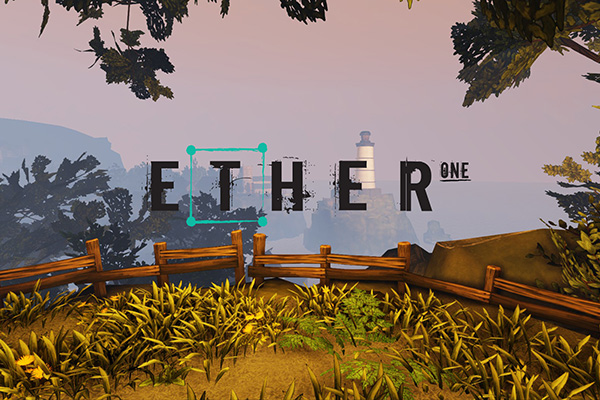Ether One
Developed and Published by White Paper Games | PC and Mac
The last few years have seen a growing trend towards the innovative genre of first person exploration games, receiving a deluge of fabulous games such as Dear Esther, The Stanley Parable and the glorious Gone Home. This genre allows developers to create games that are focused on storytelling. Unlike almost every other genre, these games are completely non-combative, instead using exploration and logic and puzzle challenges to progress the story while still keeping you engaged. Though the genre goes way back to games such as 1993’s Myst, it has lain largely untouched in the decades since, being explored only as a component of open world games such as Skyrim or the Fallout franchise. However, now with the reinvigoration of the genre, it has been exciting to see how artists have picked it up and given it their own spin. The Stanley Parable dealt with exploration not only in space, but also in storytelling and meta-theatricality, and Gone Home dealt with exploration of emotion and relationships. These games demonstrate how exploration games allow developers to explore diverse forms of storytelling and thematic consideration. The latest instalment in the exploration genre comes from a new indie studio based in Manchester, called White Paper Games. Their debut game, Ether One, continues this idea of innovative exploration, however, to what degree their innovation was successful, is another question.
Ether One uses the exploration genre to explore the idea of dementia and how we retain and recall memories. You begin the game in the Ether Institute, a research facility that sends experts called restorers, such as your character, into the minds of dementia patients to discover the source of their dementia and destroy it. This was my first real problem with the game. Though this is a clever premise in which to construct an exploration game, it quickly struck me that the game cared little about dementia aside from its function as a premise for the game. This was reiterated again and again throughout my play through; the developers seemed to neither understand nor care about how or what dementia really is to people, but rather just chucked around the word as a means to an end. For instance, this idea of discovering the cause of dementia and destroying it makes no sense for the disease at all. Dementia is not caused by psychological trauma and therefore exploring memories for a root cause makes no sense. Granted, the game is shrouded in mystery and there are several revelations, which change the way that this narrative can be seen. But, regardless of all of these discoveries, I still feel that the game missed the opportunity to truly explore dementia and the feelings and thoughts that accompany it.
However, despite the mishandling of dementia, the game’s narrative is still quite fascinating. You follow the events of a young girl’s life growing up in the early 20th Century in an industrial town in rural England. There are four major environments to explore: the Mines; the Harbour; the Industrial Area; and the Town itself. Through this exploration the game offers you two choices. The first form of exploration is discovering memory markers around these areas. Each area holds eight of these markers, in the form of a red ribbon, which, when you interact with it, will recall a portion of this girl’s memory. It is necessary to find these eight markers to progress the story. However, there is also an additional component that is not necessary to progressing the story but is necessary to your complete understanding of it. This is the solution of puzzles that you find throughout the world in the form of broken projectors. These projectors require a series of deductions and puzzles to be solved within their vicinity so that you can watch their content. There are 20 of these projectors in total, and though some were excellently executed demonstrating their worth and function within the game, the majority of these puzzles were convoluted disasters. At their best, the puzzles themselves told a story, such as a series of puzzles in the industrial complex which told the story of an employee who had been stealing and poisoned his boss so as to not loose his job. At their worst, though, the puzzles were near nonsensical, the clues were based in absolutely illogical places and their solutions were often based well outside the realm of reasonable assumption. This is made worse by the fact that the pieces of information divulged through the completion of these puzzles were very often not worth the effort needed to retrieve them. It is a good thing that these puzzles were not necessary for the completion of this game for, even as an optional side quest, they obstructed the story.
Ether One is a game that bravely attempts to expand the boundaries of the exploration genre. It is unfortunate, however, that its cavalier use of a serious illness and its ludicrous implementation of puzzle mechanics got in the way of what was generally a very interesting and well performed story.




